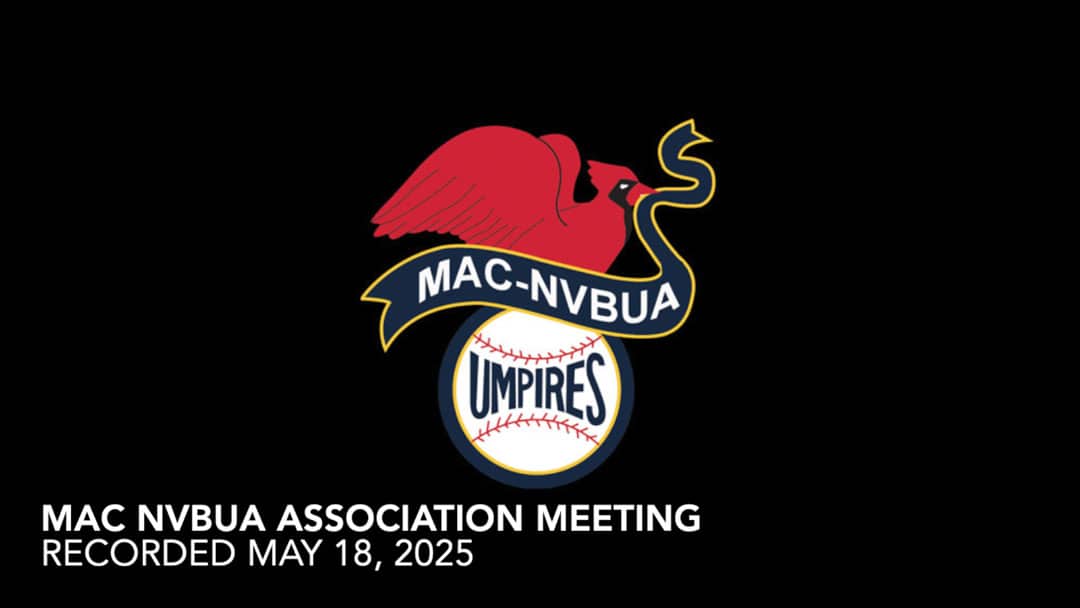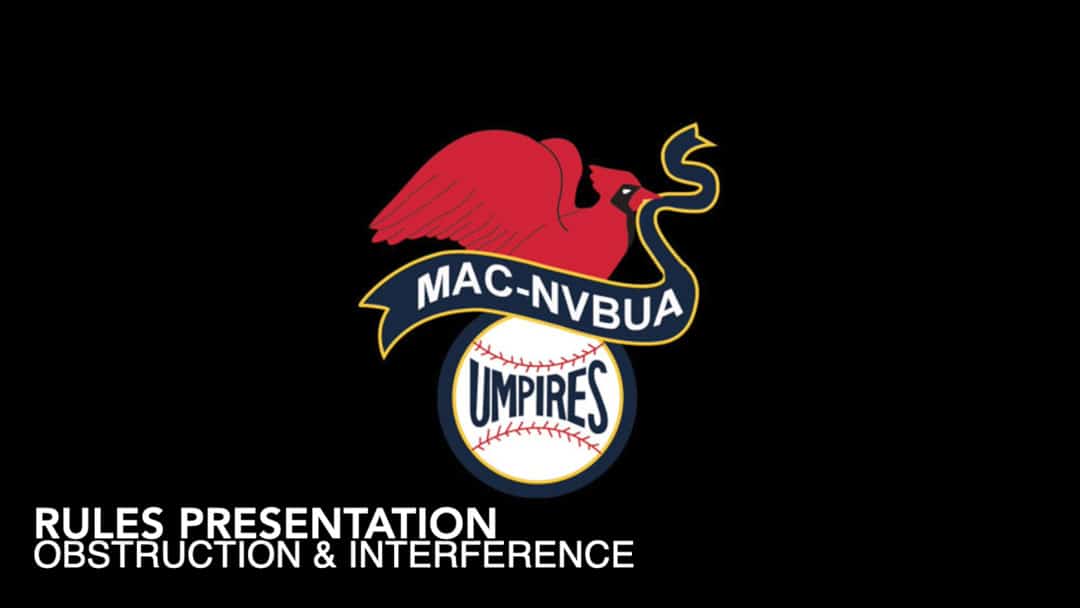From the Case Play Files of Vin Vena
Volume 3: More Baseball Rule Myths
In my last post, I wrote about some baseball rules myths. There are many more and I received some others that people hoped would be included, so I decided to continue with some more rules myths about baseball.
- “A batter can not be called for interference if they are in the batter’s box” The batter’s box is not a safe zone. IF the batter interferes, they can be called for it. This is a judgement call. Time should be given if the batter swung at the pitch or had to avoid being hit with the ball. But, the batter can still interfere if they are still in the batter’s box. Rule 7-3-5
- “The batter/runner is always out if they are out of the running lane on a bunted ball.” There needs to be interference by the runner for an out to be called. Rule 8-4-1g
- “The batter is out if he touches any base coach or teammate before he scores after a home run out of the park.” The rule states that the batter runner would need to be physically assisted by the coach or teammate. A high five or pat on the runner is not assisting them. Rule 3-2-2 and Rule 8-4-2s
- “The runner gets the base he is going to plus one base for a ball out of play.” If ball four goes out of play, the batter just gets first. Base awards are either from the time of the pitch or the time of the throw. There are no awards based on the time the ball went out of play.
- “The runner is always safe when hit by a batted ball if they are standing on a base.” This is only true if the ball is an infield fly or the ball has passed a fielder and no other fielder has a play on the ball. This ball could just be a foul ball if the runner is standing on first or third and the runner is standing partly in foul territory while also on the base
- “The runner is out if they run out of the baseline to avoid a fielder who is trying to field a batted ball.” Runners can try to advance on an infield fly. If the fly is caught, they must tag up. If the fly is uncaught, there is nothing to tag up from. IF it is an infield fly then the batter is out and the runners are not forced.
- “Runners can not advance on an infield fly OR runners must tag up on an uncaught infield fly.” Runners can try to advance on an infield fly. If the fly is caught, they must tag up. If the fly is uncaught, there is nothing to tag up from. IF it is an infield fly then the batter is out and the runners are not forced.
- “The players must tag the bag with the foot only on a force play or appeal.” The players can use any part of the body or even the ball, if it is secured by the fielder.
- “If the throw beats the runner to the bag on any play that is not a force play, the runner is out.” This is not true. A fielder must still tag the runner. A runner might be able to slide in a way to avoid the tag, even though the throw beat the runner to the bag.
- “With no runners on base, if the pitcher drops the ball during delivery, it is a balk OR it is a ball.” For the ball dropped during delivery to be ruled a ball, the ball must cross a foul line in order to be a pitch. This can not be a balk, since no runners are on base. If the ball does not cross a foul line, it is not a pitch and therefore it is not ruled a ball.
- “The pitcher must come to a set before a pick off attempt.” The pitcher needs to set before a pitch, but not before a pick off attempt.
- “The pitcher must step off before any pick off attempt.” There is no rule that requires a pitcher to step off before throwing any pick off attempt. If a pitcher does step off, they now are considered a fielder and not a pitcher. The pitcher can attempt a pick off from the pitcher’s plate, but they need to be careful about possibly balking.
- “The ball is dead if it hits an umpire in the field of play.” If a batted ball hits the umpire before it passes a fielder, the ball is dead. If the umpire is hit with a thrown ball or a batted ball after it passes a fielder, the ball is live.
- “If after a dropped third strike, the batter doesn’t immediately try to get to first, they are out.” The batter needs to enter dead ball territory to be out. Even if the batter starts back to the dugout, they are not out.
- “IF a batter is hit by a pitch, they are always awarded first base.” The location of the ball and the actions of the batter are important here. The pitch can be a strike if the umpire rules that the ball was in the strike zone. If the batter swings and is hit by the pitch, it is a strike. IF the batter leans into the pitch or does not try to avoid being hit, the ball is dead and the pitch ruled a ball or a strike. In all the cases here, after the ball hits the batter, the ball is dead.
I hope that these clear up some more of the myths.
Vin Vena
Table of Contents
Issue #8 – April 28, 2025
Letters to the editors welcome at [email protected]

MACNV Association Meeting: May 18, 2025
Replay of the MAC-NV Association Meeting via Zoom on Sunday, May 18, 2025

Rules Presentation: Pitching
Rules Presentation on NFHS Pitching Rules pre-recorded by Greg McEvoy in May, 2025.

Rules Presentation: Obstruction & Interference
Replay of the Rules Presentation on Obstruction & Interference by Greg McEvoy held via Zoom on Sunday, April 27, 2025.